For this loop, I wanted to get some feedback on sharpness. I’ve been working through some of Mike Davis’ spreadsheets and trying to determine if I’m leaving a meaningful amount of sharpness on the table by using a TL-120 or Sputnik. As I understand it, Mike’s contention is that it is not possible to get critically sharp slides with appreciable depth using standard 60-65 mm stereo base and normal FL lenses. I’m rather surprised by this contention after having seen many fantastic slides taken with TL-120s and Sputniks, but I know it’s easy for one’s eyes to be fooled, and I would guess that 95% sharpness looks close to 100% sharpness. I will say that I was particularly struck by David Lee’s Yosemite Fall slide that was included by John Thurston this loop, which seems impossibly sharp, and was not taken with a standard stereo base. I believe the proper way to investigate sharpness would be to shoot some scenes with resolution test charts at various distances and then to side by side A/B comparisons with the resulting slides in a viewer. I wish I could ask Don for advice, I know he occasionally did tests like this 🙁
With all this in mind, I picked out several slides which I personally believe to be quite sharp, and I would appreciate any feedback from others about any perceived lack of sharpness. Cloud Inversion should probably be considered as the “base case”. I believe the nears were around 50′ and I focused around that point, shooting at f/16 I believe. I believe this should secure more sharpness than the eye is capable of detecting in a standard viewer. I don’t really know anything about a cloud inversion, maybe this should better be called thick fog that settled into the valley. Anyway, it was rather unexpected and interesting to see when I woke up to photograph at sunrise. There is a bit of retinal rivalry in the clouds and shadows as this is a chacha with a tripod and it takes some time to set up the tripod and adjust the framing. Apparently quite a few dinosaur fossils have been found in these badlands.
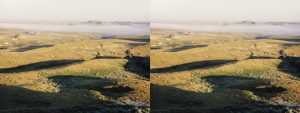
Cloud Inversion
I perceive Gem Lake Reflection to have a high degree of sharpness, however I don’t think it is objectively sharper than any of my other standard TL-120 slides. I believe the perceived sharpness is largely due to the adjacency effects caused by the high acutance first developer, along with the fairly visible grain.
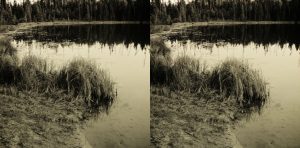
Gem Lake Reflection
Bryce Hoodoo, yes this is a Sputnik shot, and there probably is some falloff in sharpness towards the corners, but I’m not sure I can detect it! Maybe the pine needles at the far right are a bit soft. This is a pretty “easy” shot to secure sharpness as the deviation is quite low, (the nears are rather far away) but I would be surprised if I changed the aperture off the default f/22 hyperfocal setting. I do think the rock and ground appear sharper than the objects in the far distance, but I’m suspecting that this is more due to the haze and lack of high spatial frequency information in the distance rather than the Sputnik having overly relaxed hyperfocal markings, although it could be both!
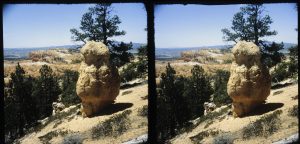
Bryce Hoodoo
Camping Breakfast was shot at f/22 using the standard hyperfocal markings on the TL-120 and I used the entire range (the near distance was 3 meters). I might be able to detect the smallest lack of sharpness in the specular highlight on the blue water bottle, but I’m not sure. I think the exposure was 1/8 of a second, so the people are probably not perfectly sharp. Yes it was posed!
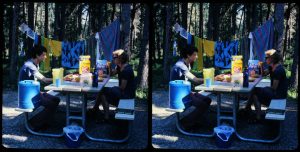
Camping Breakfast
In my opinion, Cloud Inversion does seem ever so slightly sharper than the others, but I’m not entirely convinced it is because of the more conservative DOF tolerance, but rather that the size of the plants at this distance provides a fairly high frequency subject and the low angle of the sun provides fairly high contrast, while non-hyper shots typically have inherently less high frequency detail.
So what do you think? Do you use the standard hyperfocal settings on your lenses? Or do you stop down one extra stop? Or some other technique? Ok, enough nerd talk. Sorry to ruin a perfectly good post with all this talk of sharpness! I certainly don’t think it’s the most important aspect of a successful MF3D shot, but it is fun to discuss.
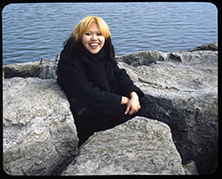
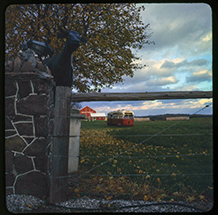

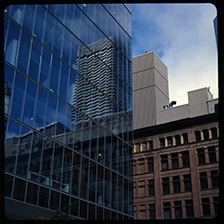
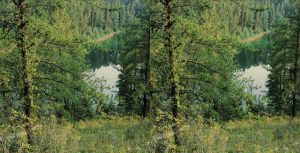
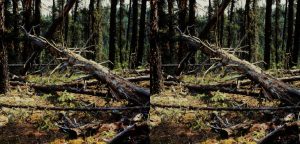
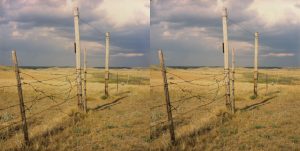
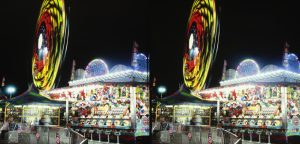




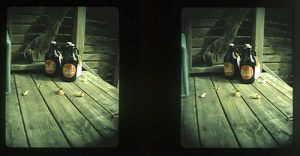
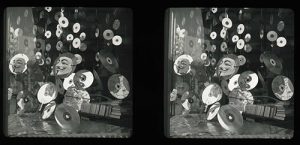
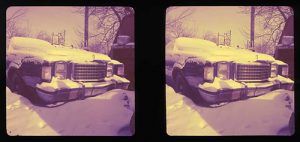
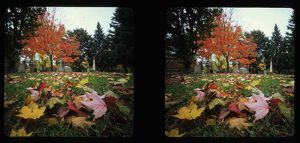
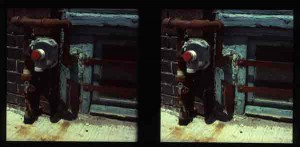
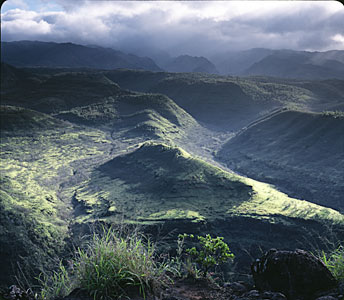 Some months back I was trying to figure out how to use a neutral density graduated filter with my TL-120. I knew I could get the round, screw in type, but that limits the composition of the image. At some point I had a brainstorm that the cokin style X-PRO series filters were big enough to fit over both lenses. So I found a used filter holder and it was indeed big enough to fit over both lenses. Next I had to find someone who had X-PRO sized ND grads. The place I found was in the UK and they claimed they had Lee Filters in X-PRO size. I thought this had to be a misprint because I could find no evidence anywhere that Lee had ever made such a filter. But after several emails to the UK company, the rep assured me they filters were real, so I took the plunge. My best friend friend build me a mount for my camera and we devised a system for getting the filter set properly (since you can’t see through the taking lenses).
Some months back I was trying to figure out how to use a neutral density graduated filter with my TL-120. I knew I could get the round, screw in type, but that limits the composition of the image. At some point I had a brainstorm that the cokin style X-PRO series filters were big enough to fit over both lenses. So I found a used filter holder and it was indeed big enough to fit over both lenses. Next I had to find someone who had X-PRO sized ND grads. The place I found was in the UK and they claimed they had Lee Filters in X-PRO size. I thought this had to be a misprint because I could find no evidence anywhere that Lee had ever made such a filter. But after several emails to the UK company, the rep assured me they filters were real, so I took the plunge. My best friend friend build me a mount for my camera and we devised a system for getting the filter set properly (since you can’t see through the taking lenses).